The Most Accurate Indicators for Scalpers on TradingView – how to set them and how to use them. (Part One)

Scalping is a high-speed trading strategy that aims to profit from small price movements in the financial markets. It requires precision, quick decision-making, and a keen understanding of market dynamics. Utilizing accurate indicators can potentially enhance a scalper’s success rate. In this article, we’ll explore some of the most commonly used indicators for scalpers on TradingView.
Moving Averages (MA)
Moving averages are fundamental indicators that smooth out price data to identify trends. For scalpers, the 5-period and 15-period exponential moving averages are commonly used. They provide quick insights into short-term price trends and can help scalpers identify potential entry and exit points.
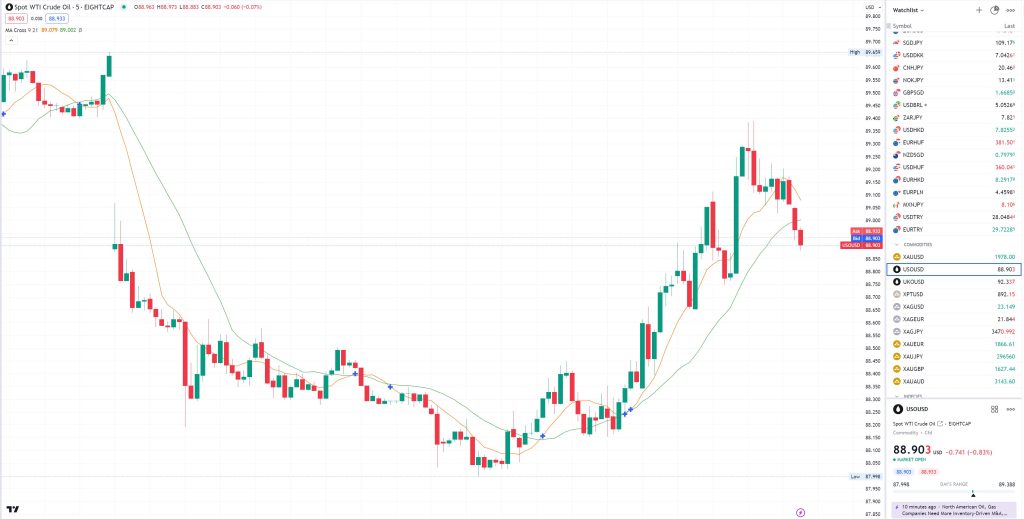
Bollinger Bands
Bollinger Bands consist of a middle line (usually a 20-period moving average) and two standard deviation lines above and below it. They provide valuable information about volatility and potential price reversals. Scalpers often use Bollinger Bands to identify overextended price levels and anticipate retracements.
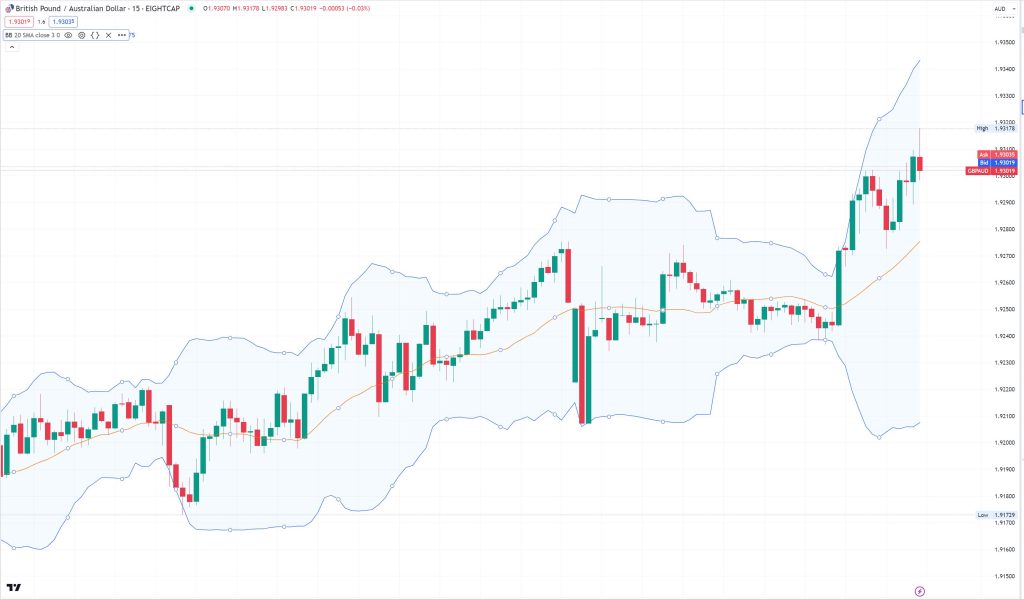
Relative Strength Index (RSI)
The RSI is a momentum oscillator that measures the speed and change of price movements. It ranges from 0 to 100, with levels above 70 indicating overbought conditions and levels below 30 indicating oversold conditions. Scalpers use RSI to identify potential reversals and confirm entry or exit points.
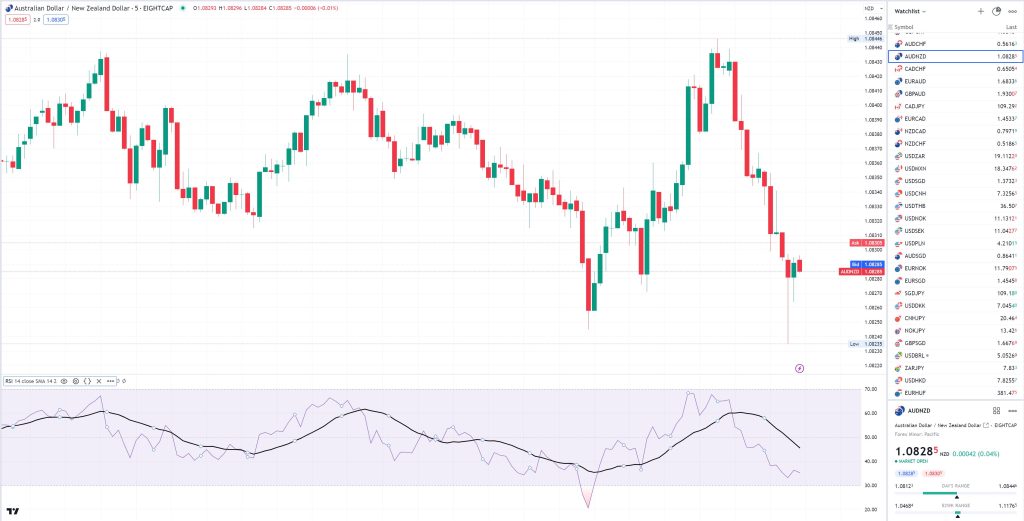
Stochastic Oscillator
Similar to the RSI, the stochastic oscillator is a momentum indicator. It provides information about overbought and oversold conditions. The fast stochastic (K%) and slow stochastic (D%) are commonly used by scalpers to identify potential turning points in price action.
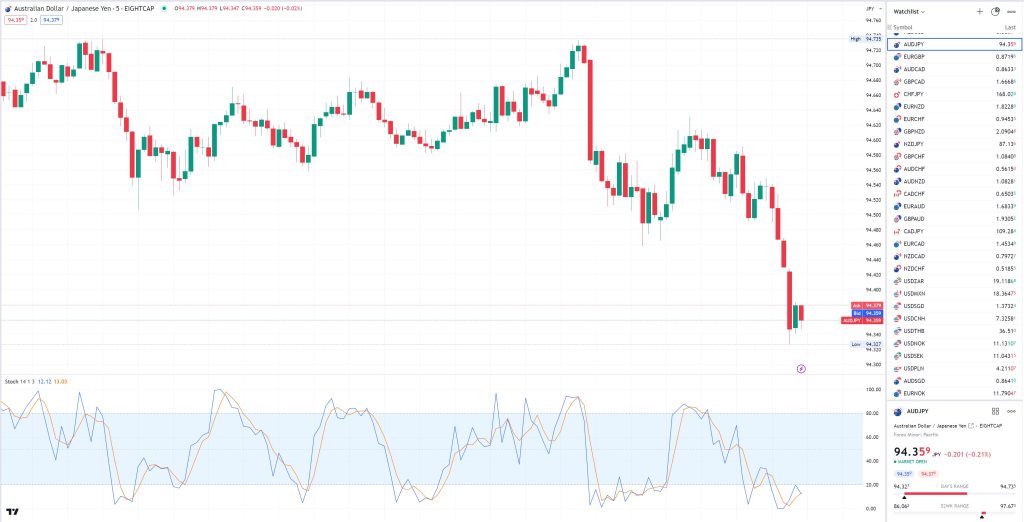
Volume Profile
Volume Profile displays the trading activity at various price levels. It helps scalpers identify areas of high liquidity, which can act as support or resistance zones. This indicator is particularly useful in fast-moving markets, providing insights into potential price reversals.
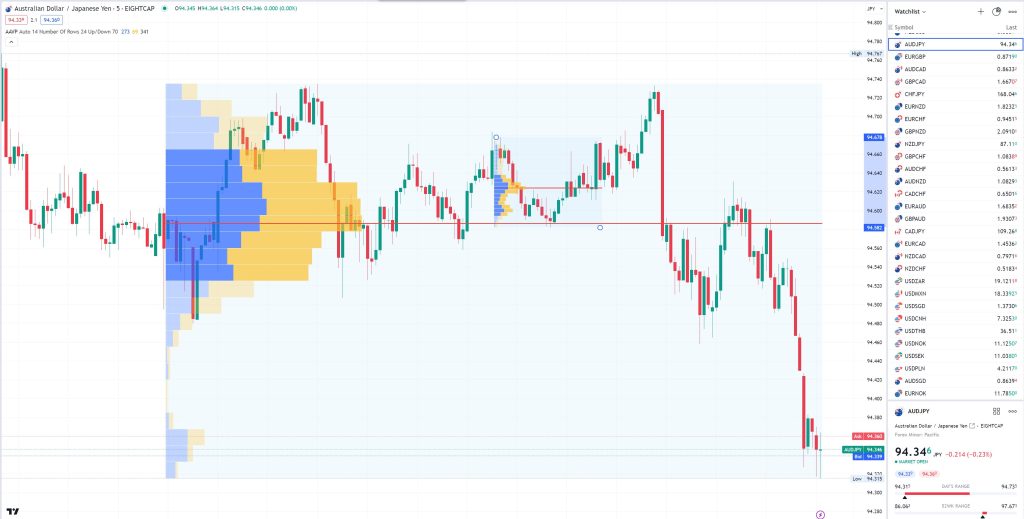
Fibonacci Retracement Levels
Fibonacci retracement levels are horizontal lines that indicate potential support and resistance levels based on Fibonacci ratios. Scalpers use these levels to identify potential entry and exit points, especially during retracements within a trend.
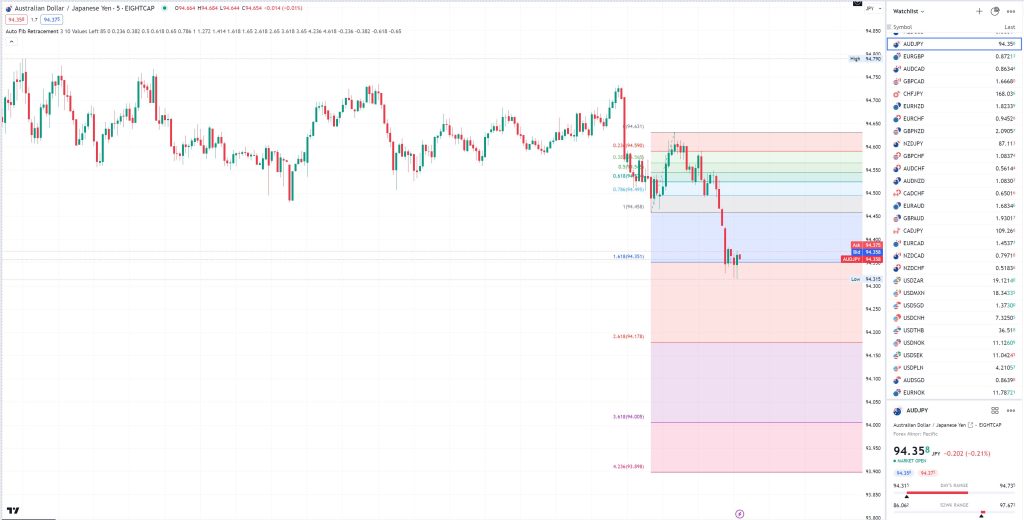
Ichimoku Cloud
The Ichimoku Cloud is a comprehensive indicator that provides information about support and resistance levels, trend direction, and momentum. It consists of several lines that provide a holistic view of the market. Scalpers can use the cloud to identify potential trend reversals and trade with the prevailing market direction.
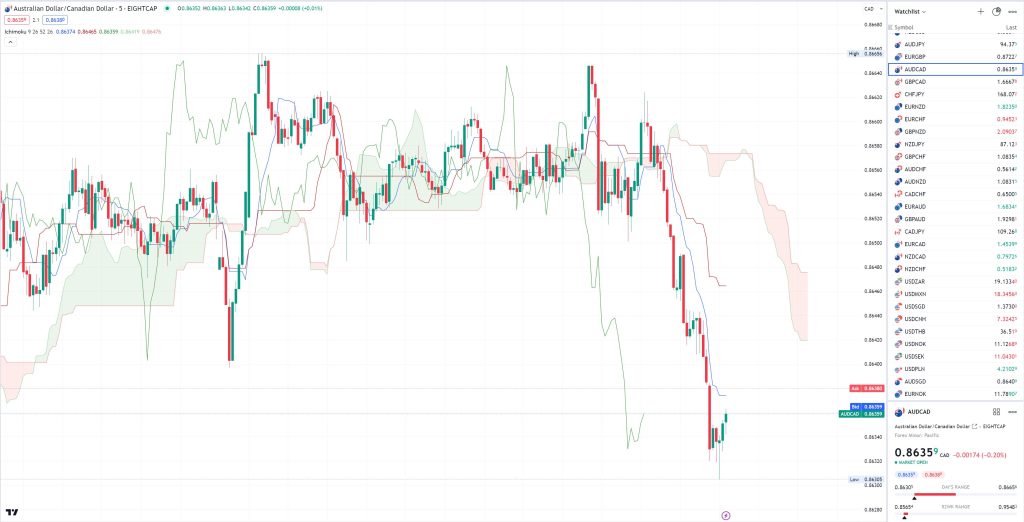
MACD (Moving Average Convergence Divergence)
MACD is a trend-following momentum indicator that shows the relationship between two moving averages of an asset’s price. Scalpers use MACD to identify potential changes in trend direction and confirm their trading decisions.
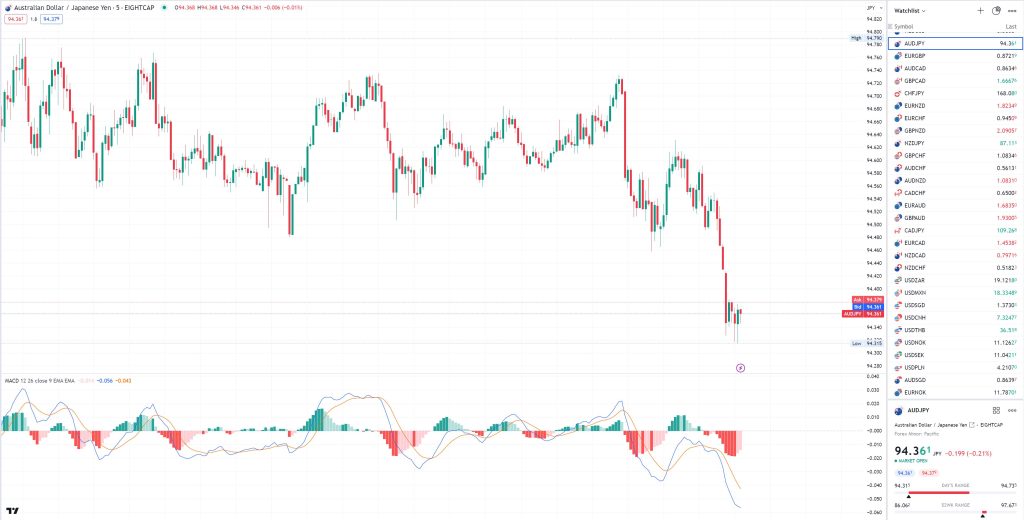
How to combine and customize. Examples added for Buy and Sell opportunities.
We have listed the most commonly used indicators for Scalping but let us also show their settings and also examples of how scalpers spot signals and confirmations for Buy or Sell opportunities.
Combination 1: Moving Average Crossover with RSI
Indicators:
- Exponential Moving Averages (EMA):
- EMA 5 (Applied to Close)
- EMA 15 (Applied to Close)
Settings:
- Use the 5-period and 15-period EMAs to capture short-term price movements.
- Relative Strength Index (RSI):
- Period: 5 (for quicker response)
- Overbought Level: 70
- Oversold Level: 30
Rationale:
- Look for crossovers of the 5-period and 15-period EMAs, indicating potential short-term trends.
- Use RSI to confirm overbought or oversold conditions, which can be indicative of potential reversals.
Buy Example:
- EMA Crossover:
- The 5-period EMA (in blue) crosses above the 15-period EMA (in red). This indicates a potential uptrend.
- RSI Confirmation:
- Simultaneously, the RSI drops below the oversold level of 30 and then moves back above it. This confirms a potential reversal. A probable entry confirmation would be the cross between the RSI and its Moving Average:
- Simultaneously, the RSI drops below the oversold level of 30 and then moves back above it. This confirms a potential reversal. A probable entry confirmation would be the cross between the RSI and its Moving Average:
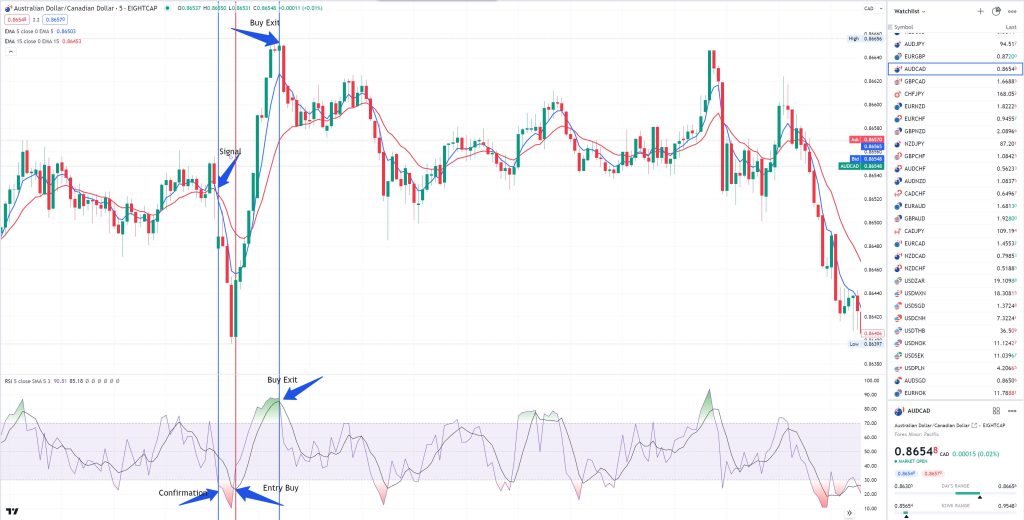
Sell Example:
- EMA Crossover:
- The 5-period EMA (in blue) crosses below the 15-period EMA (in red). This indicates a potential downtrend.
- RSI Confirmation:
- Simultaneously, the RSI rises above the overbought level of 70 and then moves back below it. This confirms a potential reversal.
Remember, these combinations and settings are suggestions and may need to be adjusted based on your specific trading style, the assets you’re trading, and market conditions. Always backtest any strategy thoroughly and consider using a demo account before implementing it with real capital. Additionally, be sure to incorporate proper risk management techniques to protect your capital.
Combination 2: Bollinger Bands with MACD
Indicators:
- Bollinger Bands:
- Period: 20 (Middle Band)
- Standard Deviation: 2
Settings:
- The Bollinger Bands help identify volatility and potential reversal points.
- MACD:
- Fast EMA: 12
- Slow EMA: 26
- Signal Line: 9
Rationale:
- Pay attention to price touching or crossing the upper or lower Bollinger Bands, indicating potential overextension or reversal.
- Use MACD to confirm trend direction and identify potential changes.
Buy Example:
- Bollinger Bands Signal:
- The price touches the lower Bollinger Band, indicating potential oversold conditions.
- MACD Confirmation:
- The MACD line (in blue) crosses above the signal line (in orange), confirming a potential upward move.
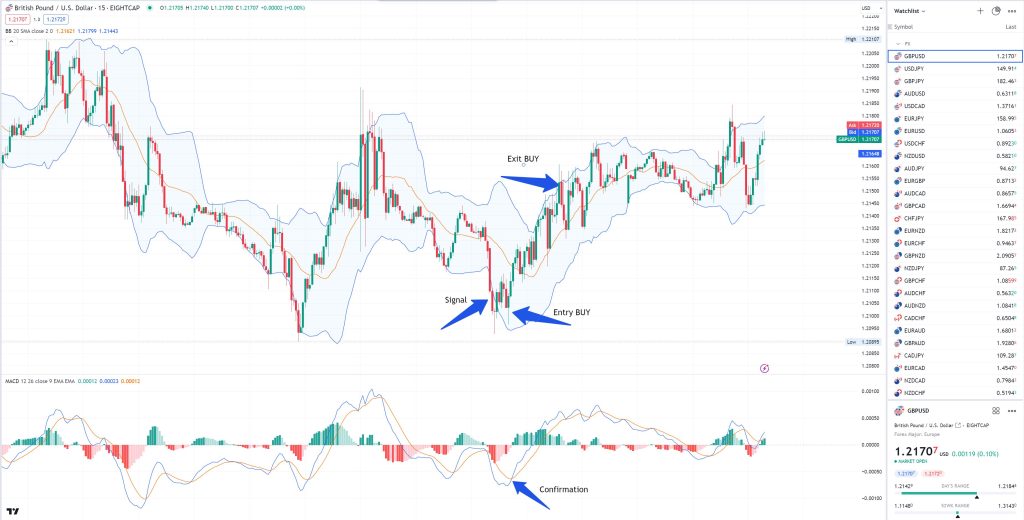
Sell Example:
- Bollinger Bands Signal:
- The price touches the upper Bollinger Band, indicating potential overbought conditions.
- MACD Confirmation:
- The MACD line (in blue) crosses below the signal line (in orange), confirming a potential downward move.
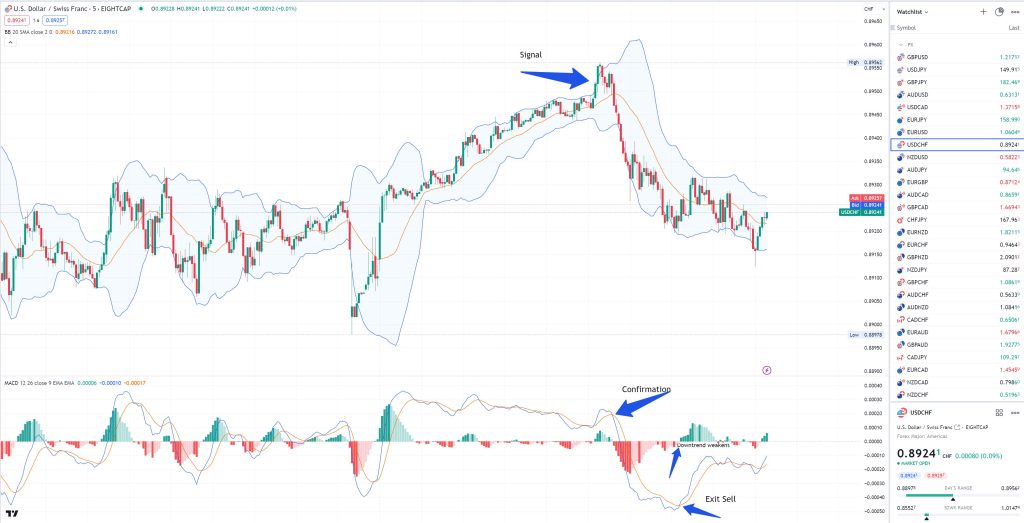
As we conclude Part One of our series on advanced scalping techniques, we trust you’ve gained valuable insights into a range of powerful indicators and their practical application in scalping strategies. From Moving Averages and Bollinger Bands to RSI, Stochastic Oscillator, and Fibonacci Retracement, we’ve explored a diverse set of tools designed to enhance your trading precision.
In Part Two, we’re taking this journey a step further. We’ll introduce two additional formidable indicators—the Ichimoku Cloud and the Stochastic Oscillator. These tools will equip you with a comprehensive view of support, resistance, trend direction, and market momentum. By combining them with the techniques discussed in Part One, you’ll have a more holistic approach to navigating volatile markets.
Don’t miss out on the opportunity to refine your scalping skills with these advanced techniques. Join us in Part Two as we dive deeper into the world of scalping and provide practical examples of how these indicators can take your trading endeavors to the next level.
* The information provided here has been prepared by Eightcap’s team of analysts. All expressions of opinion are subject to change without notice. Any opinions made may be personal to the author and do not reflect the opinions of Eightcap.
In addition to the disclaimer on our website, the material on this page does not contain a record of our trading prices, or represent an offer or solicitation for a transaction in any financial instrument. Eightcap accepts no responsibility for any use that may be made of these comments and for any consequences that result. No representation or warranty is given as to the accuracy or completeness of this information. Consequently, any person acting on it does so entirely at their own risk. Any research provided does not have regard to the specific investment objectives, financial situation and needs of any specific person who may receive it. It has not been prepared in accordance with legal requirements designed to promote the independence of investment research and as such is considered to be a marketing communication.
Please note that past performance is not a guarantee or prediction of future performance. This communication must not be reproduced or further distributed without prior permission.


